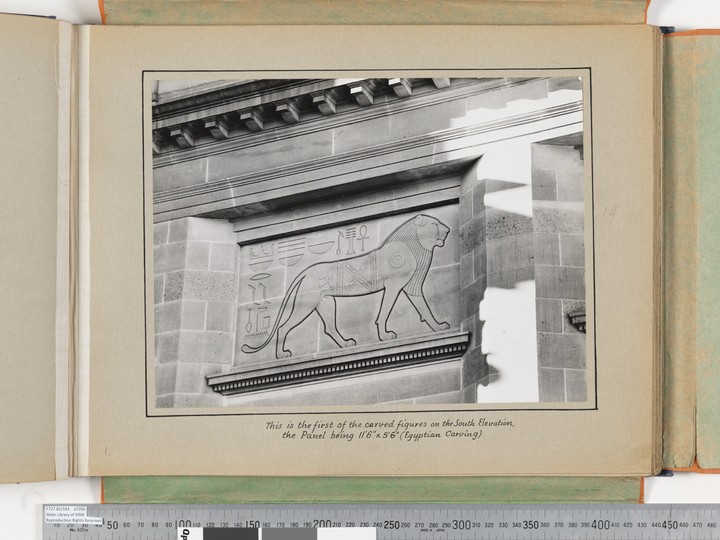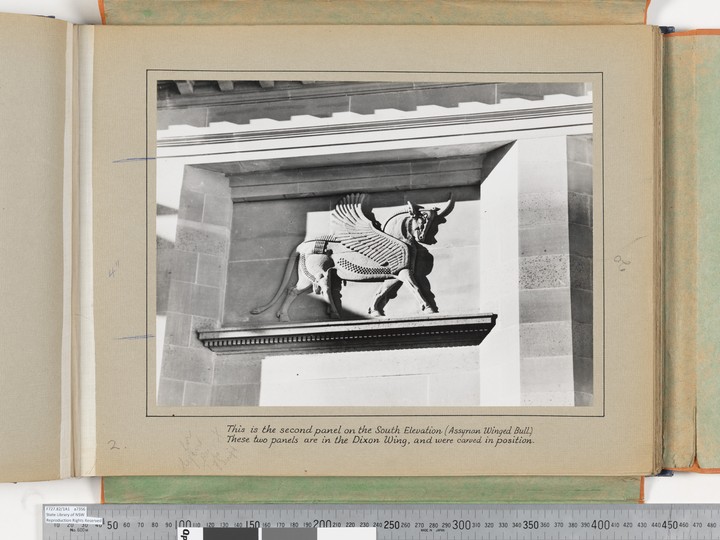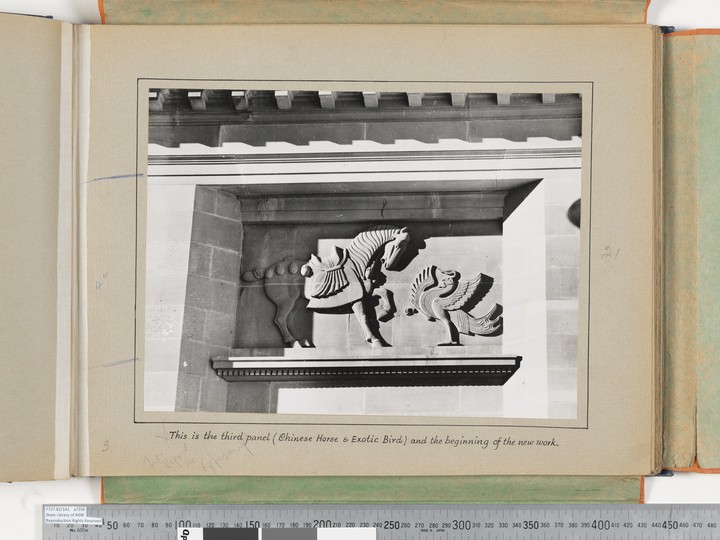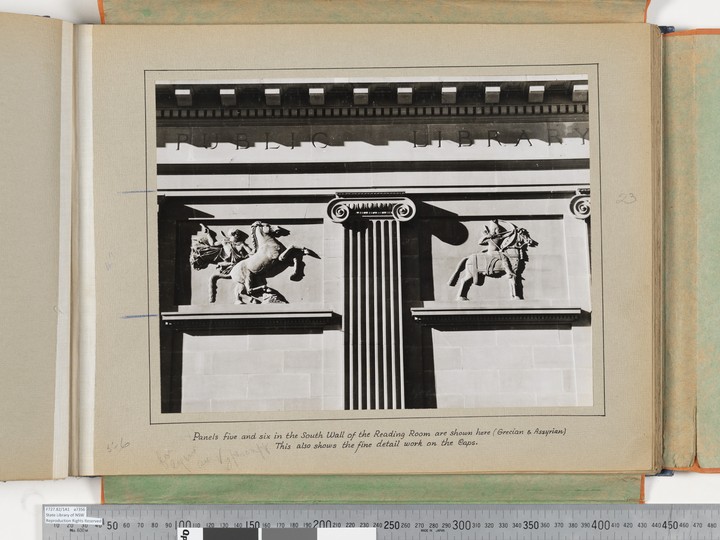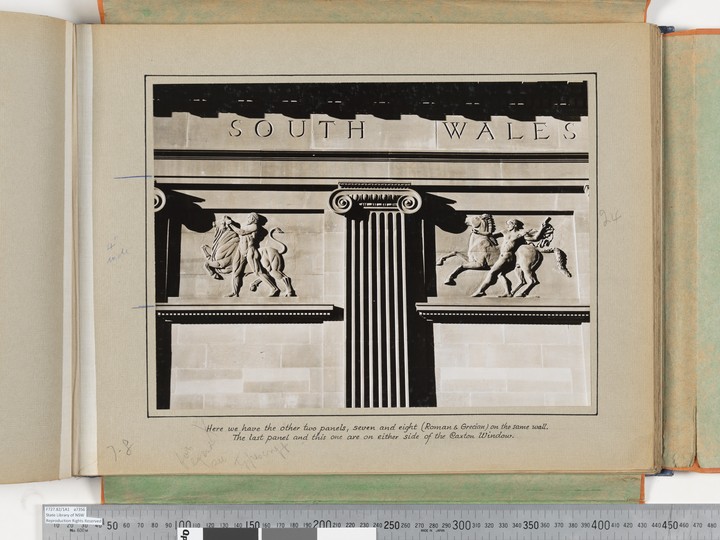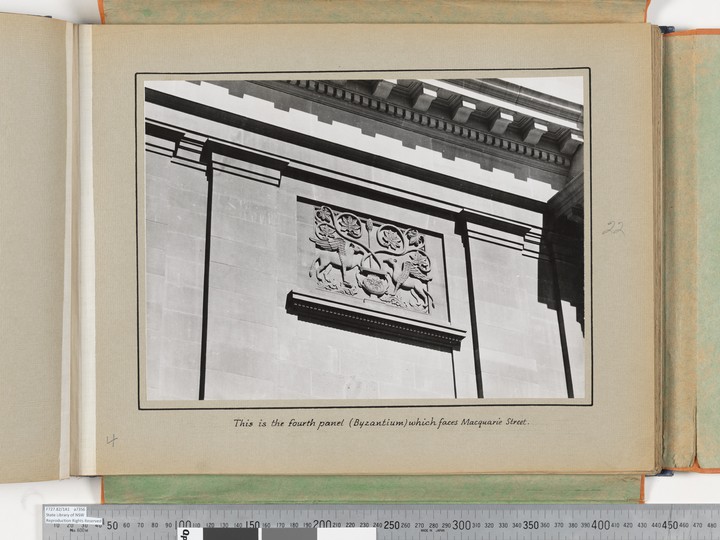Glass bridge and external frieze
1942
Frieze by M Swan, O H Dutton, F MacGowan and O Stein of Beat Brothers
1988
glass bridge by Andrew Andersons
The elevated glass bridge connects the Mitchell and Macquarie Street buildings. From here, the first segment of the frieze that continues along the southern side of the Mitchell Wing can be seen at relatively close range. This series of nine panels carved in sandstone was added to the building in 1942 to reference images found in the Library’s collection.
Carefully selected by the Library’s research team, the scenes are drawn from the religions, philosophies and arts of past civilisations. The first four carvings also represent the birthplaces of the earliest-known written languages: Egypt with the lion, Sumeria with the Assyrian winged bull, China with the warhorse and phoenix, and (obscured by the palm trees) India with guardian peacocks flanking a Tree of Life. The remaining panels can be seen from the paved terrace below, which curves around the skylight of the Glasshouse learning space to connect Macquarie Street to the Domain.
Also visible from the bridge are the extensions made to Parliament House by government architect Andrew Andersons and completed in 1985. Andersons was also the architect of the Library’s Macquarie Street building, completed in 1988.
The lion of Egypt
The first panel depicts the lion of Egypt with hieroglyphs copied from the throne of Thutmose III, who died in 1447 BCE. The lion is the strongest and most valiant guardian beast and, sleeping with open eyes, the most vigilant. Among the hieroglyphics above the lion’s back is a looped cross. This ancient symbol, called an ankh, means key of life or key of the Nile. It represents the idea of eternal life.
An Assyrian winged bull
The second panel depicts an Assyrian winged bull from Sumeria, taken from a 4th-century Persian monument now in the collection of the Louvre in Paris. The winged bull is also a protective beast.
A Chinese warhorse
The third panel shows a Chinese warhorse and phoenix. The saddled horse is from a funeral ornament from the T’ang dynasty (618–906 CE). The phoenix, a symbol of immortality, is based on a design found on a pillar dated to the 2nd century CE in Szechuan province, China.
The Tree of Life
The fourth panel (currently obscured
by two large palm trees) shows a pair of guardian peacocks on either side of
the Tree of Life.This symbol was widely used in Indian art.
The peacock represents immortality because according to legend its flesh is
incorruptible.
Horse and rider
The fifth panel shows a horse and rider from a frieze on the Parthenon in Athens which depicts the great Athenian festival, the Panathenaea.
Assyrian Mounted Archer
The sixth panel portrays an Assyrian Mounted Archer from the King’s Palace in Nineveh which is in modern Iraq.
Caxton’s printer’s mark
Above the stained-glass window between the sixth and seventh panels is a copy of William Caxton’s printer’s mark. Caxton is credited with bringing the printing press to England in 1476.
Hercules
The seventh panel is of Hercules capturing the Bull of Minos in Crete in the 1st century CE.
The Greek horse-breaker
The eighth panel is based on a 5th-century BCE Greek carving of a horse-breaker, now at Hadrian’s Villa in Tivoli, Italy.
The world tree
The final panel (around the corner) shows two griffins guarding the world tree. This image is from a relief decorating the exterior of St Mark's Cathedral, Venice which dates back to the 12th century AD.
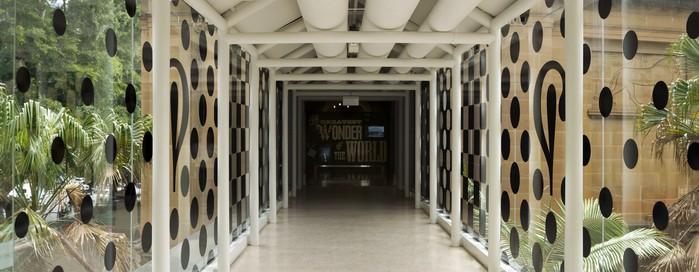


 Back to list
Back to list